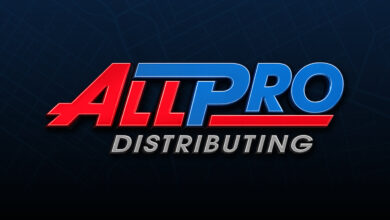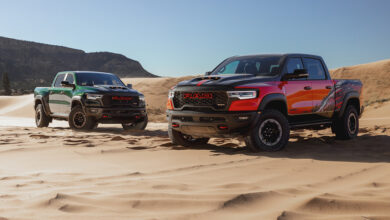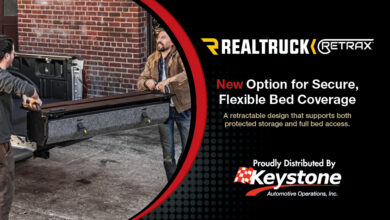Taking Suspension Lift & Leveling Kit Sales to the Next Level, Part II
Offering a noticeable appearance upgrade, the kits can also deliver steering, ride quality & drivability benefits...
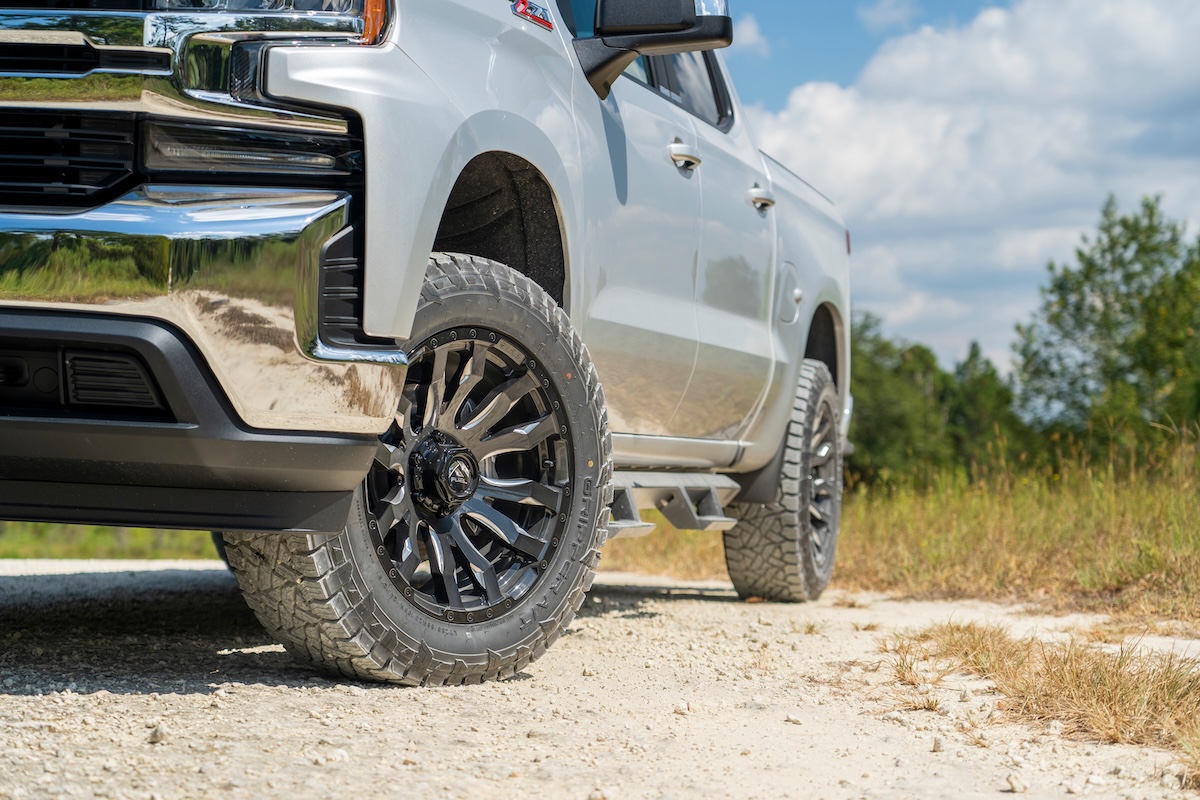
This article originally appeared in the September 2025 issue of THE SHOP magazine.
Editor’s note: This is the second in a two-part series highlighting the lift and leveling kits market. Part I, featuring additional manufacturers and suppliers, appeared in the June 2025 print issue of THE SHOP magazine.
When customers want to take their off-road and overlanding trucks and SUVs to the next level, one modification rises above the rest—lift and leveling kits.
A must-have add-on for vehicles with oversized wheel-and-tire combos, the kits hit the sweet spot for aftermarket shops by being just complex enough that many enthusiasts turn to professionals for purchasing and installation assistance, while not being so complicated that they eat up too many hours in the work bay.
Offering a noticeable appearance upgrade, the kits can also deliver steering, ride quality and drivability benefits for hardworking vehicles. For a deeper look at a market that’s riding high, suppliers offer insights on outside influences, sales tips and hot new products.
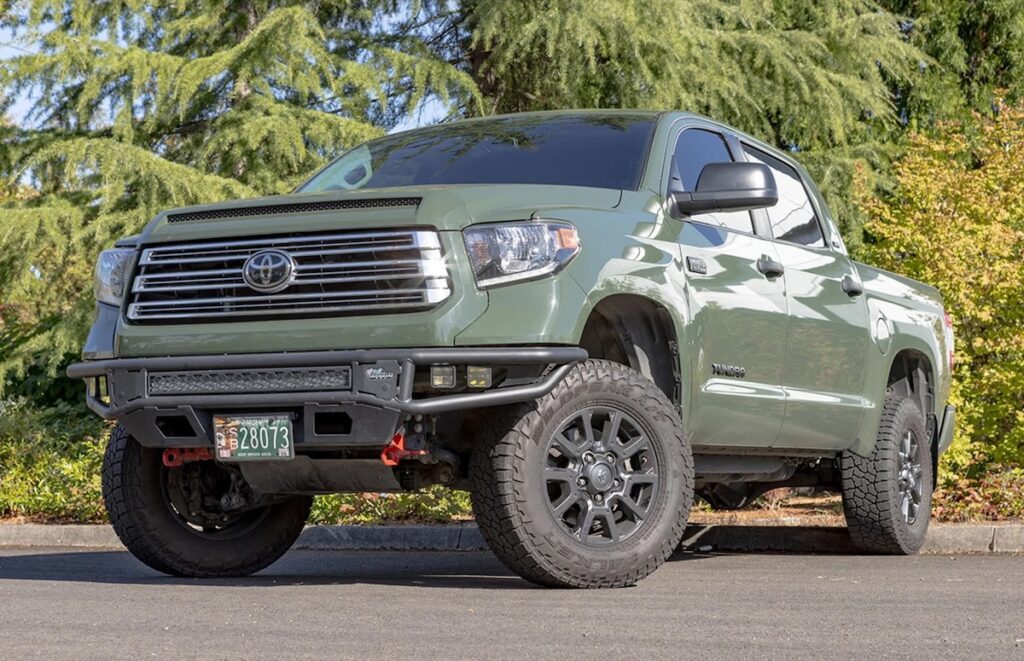
MULTIPLE BENEFITS
Many off-roaders and overlanders gravitate toward lift and leveling kits because they know the systems deliver real benefits and look good doing it.
“Customers have a desire to get out and explore, paired with wanting a great-looking truck,” says Jerry Zaiden, vice president of strategic partnerships for MagnaFlow Group and its Camburg Engineering brand.
Different consumers will value features differently. Regardless of whether they’re driving a hardcore 4×4 or a mall crawler, however, Jesse Brown, vice president of operations for RSO Suspension, cautions against going too extreme unless the use case absolutely calls for it.
“Some shops sell oversized lift kits based on appearance alone, without taking into account how the customer plans to use the vehicle—whether it’s for commuting, towing or hitting the trails,” he says. “This often results in poor ride quality, reduced fuel efficiency or disappointing off-road performance. The wrong setup can lead to a rough ride, worse gas mileage or underwhelming trail performance, leading to customer dissatisfaction.”
Most kits are paired with new, usually larger, wheels and tires. Rising costs can force consumers to delay purchases.
“The most popular tire brands in the most desired sizes can be over $400 each,” says Trina Hemann, marketing manager for RealTruck. “The total cost of lifting your truck or SUV has certainly increased, so consumers are rethinking the size of their lift or even if they should lift it at all.”
Kits also need to work with the latest innovations introduced on new vehicles.
“Trucks are becoming increasingly complex with multi-link suspensions, active ride systems and integrated driver-assist tech, so lift systems can’t just be ‘good enough,’” says Katherine Abraham, senior manager, B2B marketing for Ironman 4×4. “Shops need kits that preserve electronic stability control calibration, ride height sensors and factory alignment specs. At the same time, consumers want form and function, larger tires, increased stance and a better look, without giving up drivability or triggering warning lights.”
Meanwhile, demand for less-expensive options is also increasing, says Sara Ford, marketing manager for TrailFX.
“In today’s challenging economic environment, many consumers are being more cautious with their discretionary spending,” she says. “As a result, buyers who might have previously opted for a full lift kit are now leaning toward more budget-friendly, moderate leveling kits.”

QUALITY BUILDS CONFIDENCE
Regardless of how they use them, consumers take real pride in their off-road and overland vehicles, so it makes sense they would choose quality products over a lower price tag. It’s a tendency worth remembering during the sales process, suppliers note.
A common mistake Zaiden sees is that “most shops push lower-end cheap spacers over high-quality suspensions.”
Hemann calls it a matter of quality versus cost.
“Most of our lift kits offer a higher-end shock absorber like Bilstein, Fox and King. These do come with a higher price tag, but these options can greatly improve the lift kit’s performance,” she says. “The improved performance can increase the likelihood of a repeat lift kit customer. If a customer buys a less expensive lift and has a poor experience, the chances of that customer lifting their next ride is very slim.”
With many suppliers entering the market, knowing the products shops carry is very important.
“One of the biggest mistakes is assuming a spacer is a spacer. The truth is, poorly engineered kits can throw off geometry, increase bump steer and accelerate ball joint and tie rod wear,” says Abraham. “We’ve seen examples of inadequate camber correction or spacer materials that don’t meet proper tolerance specs, leading to ride complaints, uneven tire wear or alignment headaches. Our kits avoid this with a systems-based design approach.”
Ford says the best decisions are made when shops consider the client’s needs, driving habits and budget.
“Customers often walk in asking for a specific brand they’ve seen online or heard of from friends, but that doesn’t always mean it’s the best fit for their vehicle or intended use,” she explains. “By not exploring other options, shops can miss the opportunity to recommend a kit that offers better performance, easier installation or greater value.”
It always pays to deliver value, says Brown.
“With the current economic uncertainty, many consumers are understandably cautious about making large purchases, especially upgrades like suspension kits,” he explains. “That’s why it’s more important than ever to invest in quality parts from the start. Choosing reliable, well-made components can help you avoid costly repairs or replacements later.”
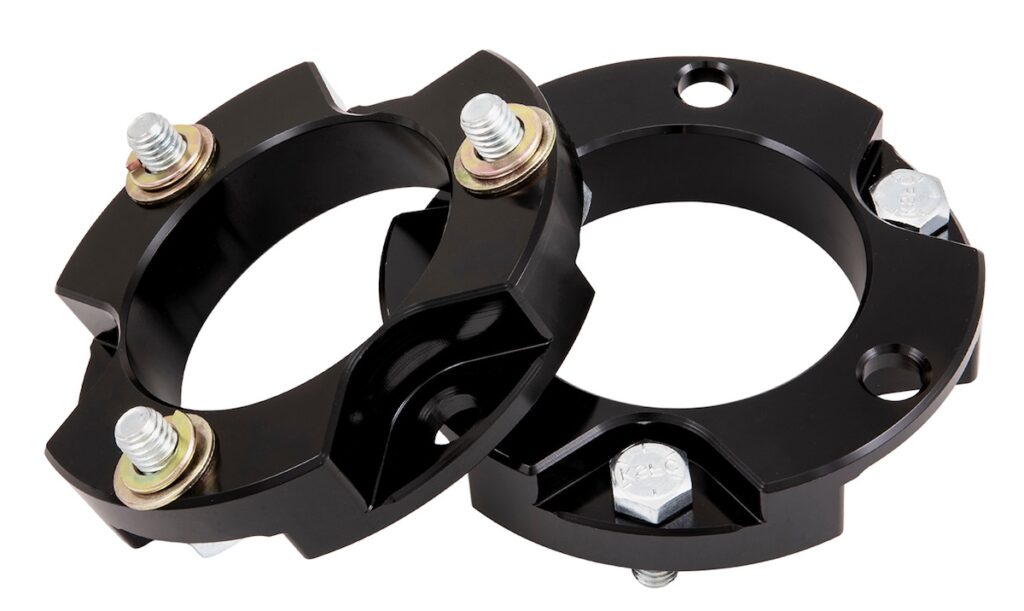
SENSIBLE SELLING
Zaiden from Camburg/MagnaFlow reiterates the process of highlighting performance over price.
“Sell higher-quality suspension systems,” he recommends. “They are less likely to come back with issues, and they cost more so there’s more profit for the shop. People want quality over cheap.”
Abraham from Ironman 4×4 suggests focusing on the performance benefits.
“Start by framing it as a precision suspension upgrade and not just a cosmetic lift. When you speak to the engineered value, alignment integrity, high-strength materials, anti-corrosion finishes and easy install, you differentiate from low-end competitors that cause more problems than they solve,” she says. “Also, invest in staff training. The more your team understands how to explain things like UCA pivot angles or preload stack tolerances, the more confidently they can close the sale.”
Education goes a long way, notes RealTruck’s Hemann, allowing shops to find the right fit for each customer’s unique needs.
“The customer may have already made their mind up on what product they want before they even come into the shop because of what they read online. You need to ask questions to make sure they are not heading down the wrong path,” she advises. “It could be that the tires and wheels they desire do not work with the lift they thought they needed. Ask questions about their driving habits, like is it a daily driver, weekend warrior, etc. Properly educating the customer will gain their trust.”
The lift category can be “polarizing,” she continues, furthering the importance of professional knowledge to find the right fit.
“Word of mouth and social media are huge factors in this category. Become known as the go-to shop because you did what was right for the customer and your sales will increase,” says Hemann.
Having products in-house and ready to install helps customers get what they want, when they want it, says Ford from TrailFX.
“Keep popular leveling kits in stock—especially for newer and high-demand truck and SUV models. Leveling kits are compact, relatively affordable and easy to store, making them ideal for quick-turn sales,” she says. “When a customer comes in looking for a suspension upgrade, having the right application on hand can be the deciding factor between making the sale or losing it to an online competitor.”
Shops can also gain an edge over competitors by doing all they can to help consumers get into the proper system—even if it takes a while.
“Not everyone has the cash upfront for a lift or leveling kit, even if they really want one,” says Brown from RSO Suspension. “Giving your customers flexible payment options can make all the difference in helping them say ‘yes’ without stretching their wallet.”

LIFTS & LEVELING KITS
HOT PRODUCTS: Camburg Performance Series Suspension Systems
FEATURES & BENEFITS: Can be paired with most aftermarket coil-overs for off-road performance; billet upper control arms paired with the all-new X-Joint XL sealed race series ball joints; made with 4340 heat-treated alloy steel.
Camburg Engineering
A MagnaFlow Group brand
Jerry Zaiden
VP Strategic Partnerships, MagnaFlow Group
HOT PRODUCTS: IRONMAN 4X4 Lift & Level Kit Line
FEATURES & BENEFITS: Popular platforms include Ford F-150, Toyota Tacoma and Ram 1500; kits engineered for precision fitment and optimal geometry retention with up to 3.5 inches of lift; CNC-machined billet aluminum spacers; bonded rubber bushings in upper control arms.
Ironman 4X4
Katherine Abraham
Senior Manager, B2B Marketing
HOT PRODUCTS: 3-Inch Lift Kits
FEATURES & BENEFITS: Available for 2019-25 Silverado 4WD applications; offer multiple shock options including Fox and King coil-overs.
RealTruck
Trina Hemann
Marketing Manager
HOT PRODUCT: 2.5-Inch Stage 3.1 Lift Kit for Jeep JL
FEATURES & BENEFITS: Comprehensive kit features front and rear adjustable reservoir shocks that are fully rebuildable; also includes front lower adjustable control arms, front adjustable forged track bar, rear track bar relocation bracket, front and rear coil springs, and more.
RSO Suspension
Jesse Brown
VP of Operations
HOT PRODUCTS: TrailFX 1-Inch to 2-Inch Leveling Kits
FEATURES & BENEFITS: Durable CNC-machined components made from billet aluminum or steel; engineered to eliminate ball joint, tie rod and steering bind while maintaining factory alignment specs; simple installation with no cutting or drilling required; hardware included.
TrailFX
Sara Ford
Marketing Manager
